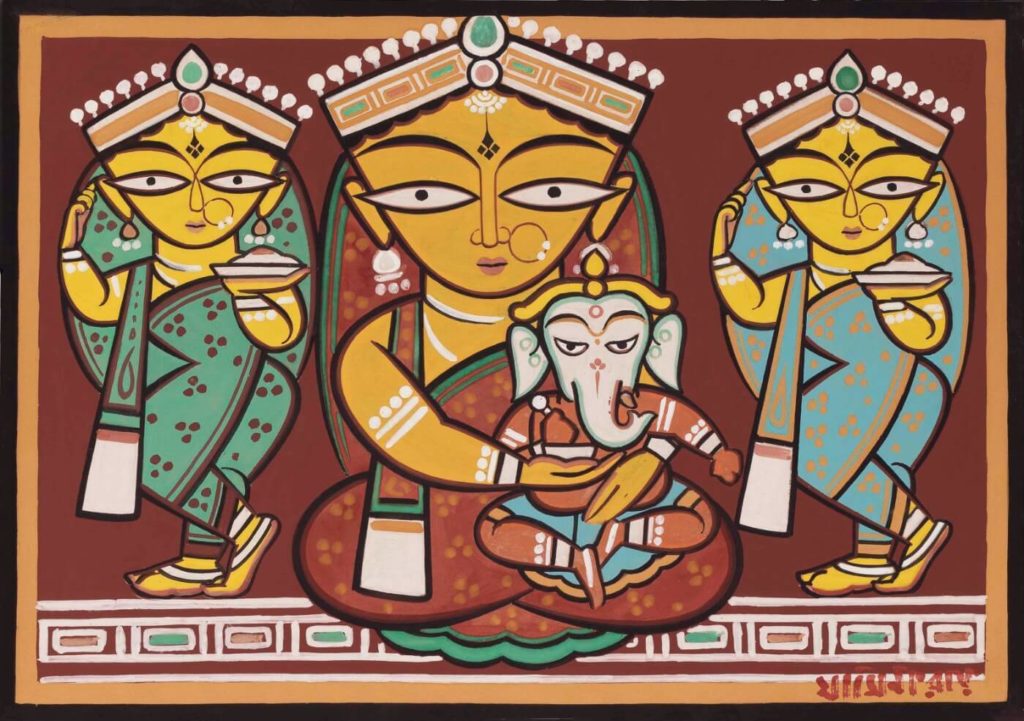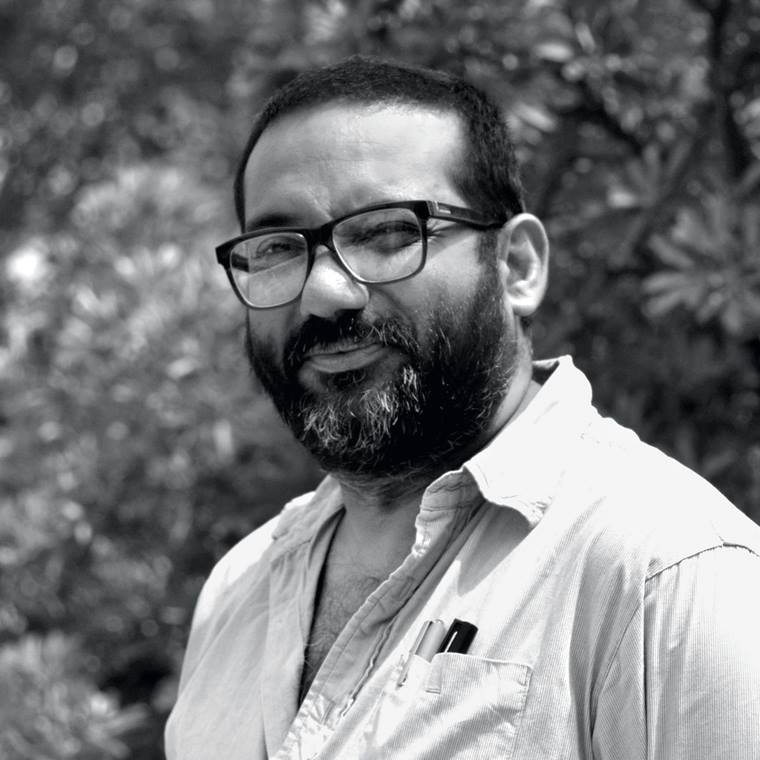A long time ago Indian fine art got the blend of eastern culture. I am not saying that Indian art was not eastern but in the middle of the invasion of India by the British East India Company, art got influenced- by influence I mean that Indian fine artists started getting a load of western art in their works. Even art schools were targeting western art and teaching the western aspects of art. It was the time when Indian folk art and the artist were getting less recognition not because they were not the best in the market but because the westerners did not only invade a country but also invaded the culture of that country.

Government College of Art, Kolkata was the epicenter of the most valuable minds in art and Abindranath was indeed one of them. It was the time when Industrial Revolution was at its best and the handmade works were becoming more volatile and risky. There was an export of goods and the imports of readymade materials. These all things also influenced the art world. It indeed increased the reach of the Indian artists to the other nations in Europe but the identity of Indian art was in crisis.
Art practices in India were not new but the influence of the western culture in it was definitely a new thing. It was creating an amalgam of both sides of the world. It was what it was. I am going to review it but as an art writer and influenced by the artist’s work I can only be supposed to say that it was not the amalgam that was the big deal but the spark and passion of the artist. The time produced wonderful artists and they were from both sides of the world and yes, they have their own style and aura in their work. Some find it passionate to amalgam the two sides of art and some find passion in the eastern art as well as some find passion in the purely western art.
It was 1908, emperor of India was Edward VII who was popularly known for his playboy nature. Well, he died in 1910 but there was one of the most important things happening in the art world was that Jamini Roy got his Diploma in fine art from the Government College of Art, Kolkata. I am specially mentioning Jamini Roy because he was the one who will move towards more folk style art than western style. It was the time when he was taking inspiration from his own culture and society. According to my point of view, he was the one sparking light that turned into a forest fire.
Jamini Roy’s search for inspiration for Indian culture and re-establishing its aura in fine art made him the torchbearer of Indian art students in the later years. His works were amazing and his strokes were sharp and bold. Delightfulness in his paintings shows a path to the confused art students. It was Indian fine art and it was in the need of a resurrection.
Kalighat temple is located in the south part of Kolkata. It has its own historical value with a legend that it is one of the 51 pith where a body part of Devi Sati fallen. According to the legend, the toe of the right foot of Sati has fallen there while God Shiva was performing the Tandava dance in the grief of the death of Sati. The idol of Devi Kali is different from the other idols, it has three eyes and a long tongue of gold as well as four hands which too are made of gold. The head of asura king Shumbha is in her one hand and a scimitar in another. The other two hands are in the “Abhaya” and “Varada” mudras.

There is obviously a ghat for bathing. These places are full of folk paintings that are made with organic and completely earthy materials. Although Jamini Roy learns western art and initially working on the landscapes and heads was not much impressed by the western symbolism. Consequently, he was searching for some inspiration for his work and he got it from the paintings of Kalighat. It was indeed a great inspiration for him and this can be seen in all of the works. Learning the eastern and most importantly Indian art and unlearning the previous art knowledge played a very important role in his artistic life.
It was his works on tempera that offered him a new identity among the various artists of the twentieth century. This helped him to simplify his works to establish a different image than the other artists, and resurrecting Indian folk art on the world stage.
The year was 1925, he was about 38 years old. When we look upon his way of life, we find patience and this patience was the main protagonist of his art and life which made him work for almost 20 years. It was indeed a surprise that he devoted all his young and energetic life to the search for inspiration.
His work as an artist before getting inspiration is nothing more than a surprise for the people who want to pursue a career in art. His initial works which were made on the commission were really appreciating and valuable for his experience. It was an area of expertise but the problem was not his work but the internal inspirations lacking in his initial days. These kinds of inspirations are very important for any kind of people whether it is for the commercial or for the art. Choosing an inspiration is good for the both artist and the person which is going to adore it.
His initial days were lack of solid inspiration. It was indeed not going to change the fact he was hardworking and very passionate about his works but if we think carefully does it affect his zeal for work in the long term? In my humble opinion, it is definitely a factor that influenced his work in the long term. Choosing a good inspiration and an amazing work opportunity to work on inspiration is definitely a factor.
Kalighat temple is indeed a powerful place for the Hindus but its influence on Jamini Roy is even more mystic. It is the place full of Indian Kalighat paintings. The most specific quality of these paintings was beauty and simplicity. Colors on tempera with the clear cut lines changing the rules of eastern art and emerging as a prominent art and a high level of expressionism accomplished a lot of things in the art which were indeed untouched by most of the painting masters and local people.
As Jamini Roy was in the search of inspiration and inspiration was in the search of Jamini Roy and finally, with the will of almighty, they both got each other. This inspiration changed the artist’s whole passion and need.
His inspiration from folk art is what can be compared with the Picasso Bull- a complex structure of bull which turned into the very simple image which is indeed an abstract which again turned into very few lines which were enough to describe the full structure of a bull.
Well, it was something Jamini got in his early inspiration, an ancient style of art that does not get complex rather more and more simple. If we take look carefully then we will find that it is not about the details and how much we see in a figure but it is all about how it can be seen in the more simple form as well as basically convert it into some lines which are indeed able to draw the attention of the viewer. It is not the complexity that should be appreciated by the artist but the simple structure of a subject should be more appreciated and loved.
To be honest, his art as an artist made him a torchbearer of simplicity. During his life, he used the ancient and folk form of art and depicted the most complex structure and emotions in the simplest form by reducing the noise which was present in the subjects.

Vikash Kalra is a self-taught artist and writer based in New Delhi whose work has been exhibited across India and is held in several private and corporate collections.